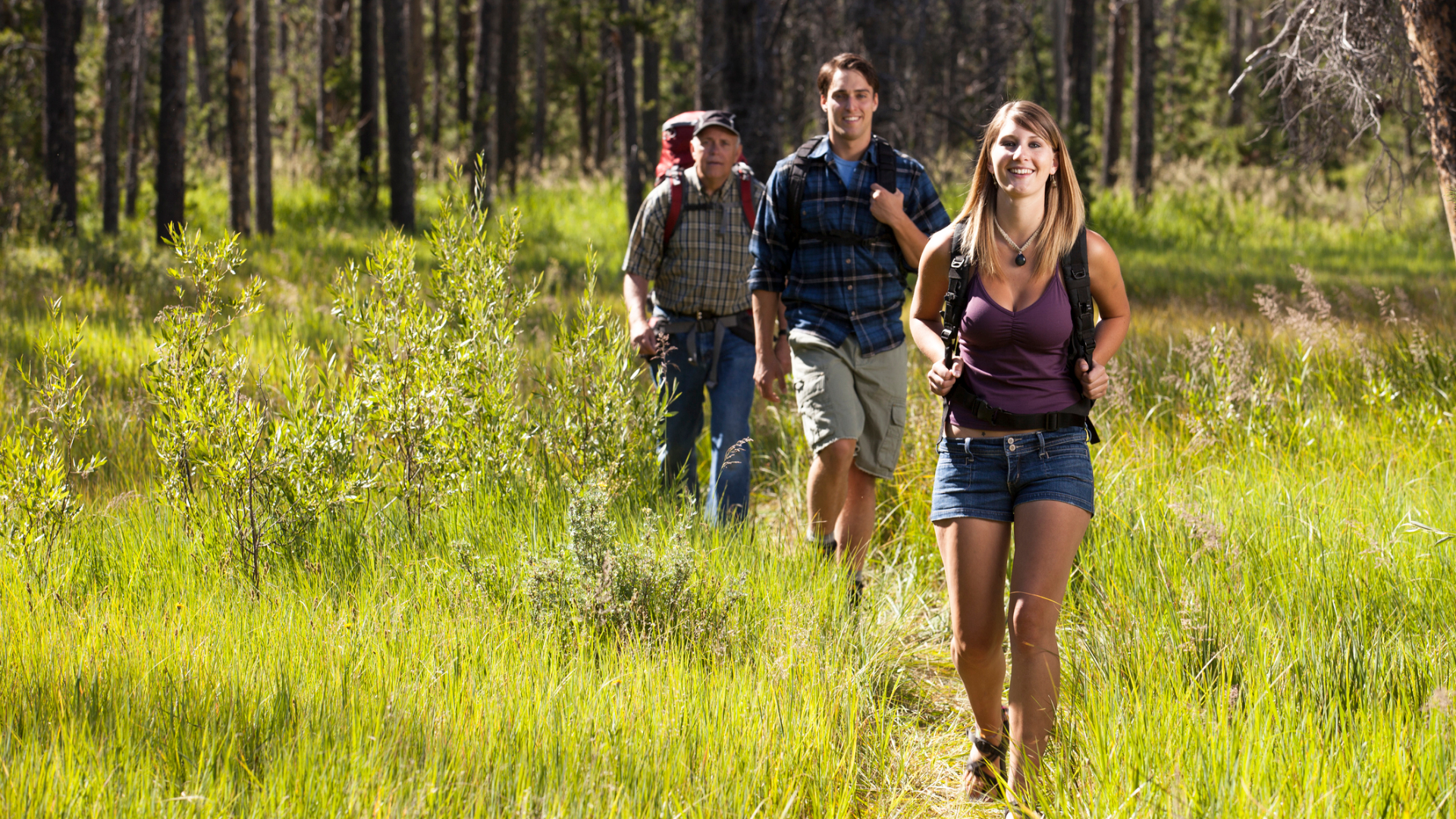How to train for a thru-hike: preparation, practice and staying motivated
Exercising body and mind before the start of a big adventure is an investment in success, so knowing how to train for a thru-hike is crucial – but so is your mental approach

Preparing for a thru-hike has both physical and mental aspects, and putting in the time to make sure you’re physically and mentally fit for your thru-hike will significantly increase your chance of finishing your intended route.
Here's how to train for a thru-hike.
- Suit up for a thru-hike with the best hiking boots
- What is thru-hiking? Learn the basics in our guide
- Before you set off, you need to think about what to take thru-hiking
Training for a thru-hike
How to train for a thru-hike will depend on your normal level of activity. If you’re a couch potato who has suddenly decided to tackle a thru-hike, plan for at least six months of walking, running, hiking, biking, and other activity to get your heart, lungs, and legs strong enough so that you won’t be miserable when you hit the trail.
If you’re someone who runs or hikes, and you have a high base level of aerobic fitness, you might not need to train so extensively, but any specific training you do will make your project easier, and a few long weekend hiking trips beforehand will also help you hone your gear.
The ultra approach

Thru-hiking is the ultra running if the walking world and, while there are obviously differences between the two pursuits, there are also many cross-learnings – not least because runners are rather obsessed with performance and collectively they have done lots of research into what makes a lengthy trail experience successful. Or not.
“You have to start where you are at,” says Jason Koop, Head Coach for Carmichael Training Systems in Ultra running, and author of Training Essentials for Ultra running. “If you are not training at all, that might mean going out on a 40-minute hike two to three times per week for a few weeks. If you have some sort of fitness base already built up, you should add hiking volume on the order of 10 percent per week, every other week.”
That’s not a magical formula, but Koop advises that it will put most people in the right ballpark to increase load if they have a reasonably active background to start with.
All the latest inspiration, tips and guides to help you plan your next Advnture!
Hike, hike, hike, and then hike some more

“The way to think about training, is you want to do more of the most specific activities first,” Koop says. “Then add in things that are less specific.”
So, hike a lot. Once you have maximized your hiking, then you might want to consider strength training. Koop explains that, for a thru-hike, there's no magical number of months you need to prepare. But, the longer you have to train for your thru-hike, the better prepared you will be.
Ultra runner Aliza LaPierre advises that aspiring thru-hikers put together a program of increasing activity to meet what they hope to accomplish on day one. “If you’re hoping to hike for 12 miles or eight hours on your first day on the trail, work up to a 12-mile or 8-hour hike before you leave” she says. “That will give you the confidence to know you can do it.”
Chris Reimer – camping department head at Outdoor Gear Exchange in Burlington, Vermont, who has thru-hiked the Long Trail, Appalachian Trail, and Pacific Crest Trail, and plans to complete the tripled crown and the Continental Divide Trail next year – agrees.
“The best physical training you can do to train for thru-hiking is to go hiking,” he says. “Load up your backpack with the gear you’ll take on the trail, and head out for an overnight or two nights somewhere similar to where you’ll be hiking. Not only will that be good training, but it will help you evaluate your gear, and figure out if there are things in your pack you can leave behind.”
If you really can’t get outside before your hike, put in some serious time on indoor training equipment, such as the Stairmaster. The climbing motion of a Stairmaster is most similar to what you’ll encounter on a serious hike, and even though it might be awkward, train on the mill with your loaded pack on your back.
Start sensibly and keep plans flexible

Many thru-hikers use the first couple of weeks on the trail as ‘training’. “The trail will get you in shape,” says Reimer. “If you’ve never thru-hiked, you have no idea what it will be like once you hit the trail. There is a lot of social pressure to hit the trail and start clicking off 20-mile days. A lot of people do that off the bat and get injured or discouraged.”
Reimer says that once you’re on the trail, regardless of your pre-hike training, start small. “Maybe plan 8- to 12-mile days for the first couple of weeks,” he advises. “One day, you’ll notice you finished your 12 miles, it’s early, and you still have the energy to keep going. Then you know it’s time to bump up your mileage.”
Reimer says that on the trail, the thru-hikers he encounters who are frazzled and stressed are the people who are trying to stick with an overly rigid schedule. “You’re going to have good days, and you’re going to have bad days. It’s tough to plan around. Keeping your mind on the finish is important, but so is taking your trip one day at a time. Don’t look at the finish line when you’re just starting.”
“It’s very important to have the big picture in mind,” agrees LaPierre. “But stay in the moment so it doesn’t become overwhelming. Enjoy where you are what you’re doing and who you are around so overall mileage doesn’t psyche you out or make you panic. Remember why you are out there.”
One day at a time

Most of the time when someone bails on a big goal it’s because they can't maintain their effort, said Koop. “Make your training sufficiently hard that you have enough experience, so that when the going gets tough, you can say 'I've been here, I can persevere',” he advises.
Koop, who has coached hundreds of elite athletes, says it’s not uncommon for a person undertaking an endurance event to fall into a trap called 'perceived exertion endpoint interaction'. During the course of a task – whether that’s a workout, an attempt at the fastest known time, a race, or a big undertaking like a thru-hike – you constantly evaluate how you feel at the moment, and then extrapolate that to how you think you will be feeling at the end of the task.
Koop, who has written extensively about this phenomenon, says: “It's a subconscious action that everyone does to one extent or another. The failure of this with a thru-hike or other long adventure is that you are extrapolating far beyond your means. There is just too much unknown. So, all the clichés about 'staying in the moment' and 'doing the mile you are in' have some sort of biological basis.”
Be prepared to make changes
And when you’re feeling low or run down, you might just need to give your body a break.
“Listen to your body or you’ll get hurt,” says Reimer. “You’ll be hurting a lot regardless. So, if you need a rest, take a day in town. If your gear isn’t working for you, swap it out instead of suffering. Drop stuff, make changes, be willing to adapt. Being on the trail is always completely different than you expect, even if you’ve done a big hike before.”
And, if you won’t always have cell service during your planned hike and you feel like your phone is your security blanket, LaPierre says to leave it at home and spend a couple of days in the woods. “Get comfortable with being uncomfortable, mentally and physically,” she says. “It’ll open up your world.”
Vermont-based writer, photographer and adventurer, Berne reports on hiking, biking, skiing, overlanding, travel, climbing and kayaking for category-leading publications in the U.S., Europe and beyond. In the field, she’s been asked to deliver a herd of llamas to a Bolivian mountaintop corral, had first fat-biking descents in Alaska, helped establish East Greenland’s first sport climbing and biked the length of Jordan. She’s worked to help brands clean up their materials and manufacturing, and has had guns pulled on her in at least three continents.

